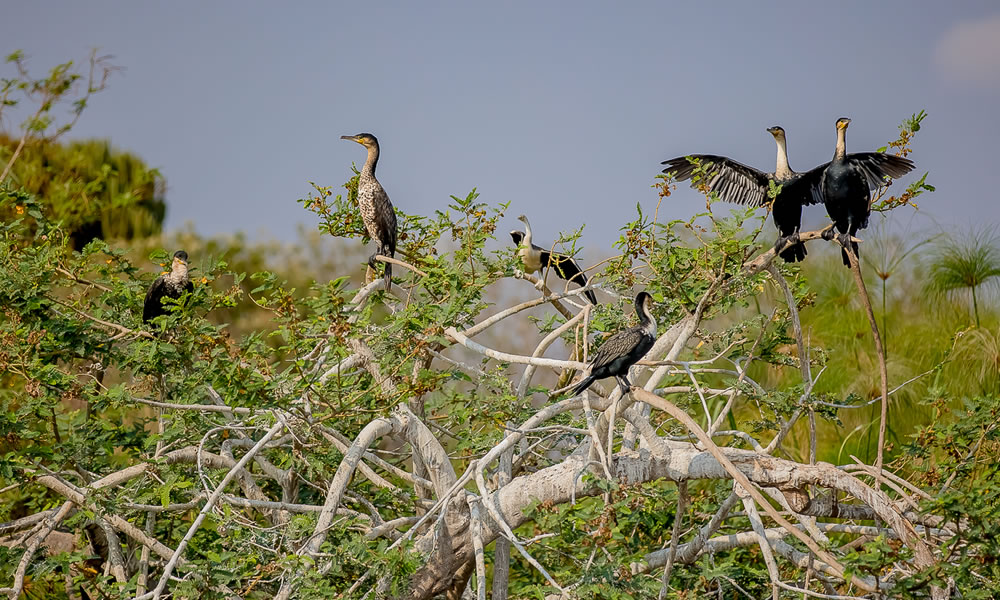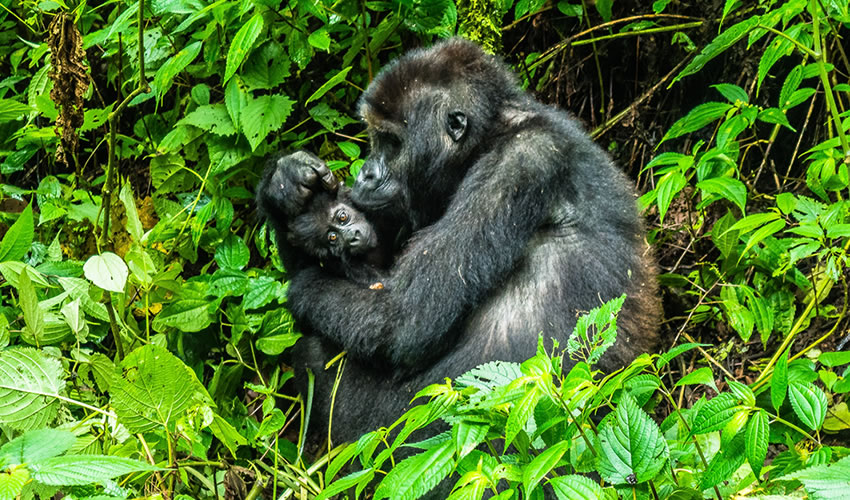Birding in Akagera National Park

Located in eastern Rwanda along the border with Tanzania, Akagera National Park stands as one of East Africa’s most rewarding birding destinations. This remarkable 1,122-square-kilometer protected area offers birdwatchers an extraordinary opportunity to observe over 500 bird species across diverse ecosystems ranging from wetlands and lakes to savanna grasslands and montane forests. Whether you’re a seasoned ornithologist or an enthusiastic beginner, Birding in Akagera National Park provides unforgettable encounters with both common and rare African bird species.
The Rich Avian Diversity of Akagera National Park
Akagera National Park’s exceptional bird diversity stems from its unique position at the convergence of multiple ecosystems. The park’s varied habitats support an impressive array of species, making it a critical Important Bird Area (IBA) in Rwanda. The extensive wetland system, anchored by lakes Ihema, Rwanyakazinga, and Gishanju, attracts numerous waterbirds and provides essential breeding grounds for both resident and migratory species.
The park’s bird checklist includes spectacular species such as the endangered Shoebill Stork, one of Africa’s most sought-after birds. Other notable waterbirds include African Fish Eagles, Saddle-billed Storks, Goliath Herons, and various species of pelicans, cormorants, and kingfishers. The savanna areas host colorful bee-eaters, hornbills, and numerous raptor species, while the forested sections provide habitat for turacos, barbets, and forest specialists.
Best Birding Locations Within Akagera National Park
Lake Ihema and Surrounding Wetlands
Lake Ihema represents the crown jewel of birding locations in Akagera National Park. This expansive freshwater lake and its surrounding papyrus swamps offer prime habitat for water-dependent species. Early morning boat trips on Lake Ihema provide excellent opportunities to spot the elusive Shoebill Stork, particularly in the quieter northern sections of the lake. The lake’s shores teem with African Jacanas, various heron species, and numerous duck species including Egyptian Geese and Yellow-billed Ducks.
Mutumba Hills and Forest Areas
The rolling Mutumba Hills and scattered forest patches throughout Akagera provide habitat for forest-dwelling species rarely found elsewhere in Rwanda. These elevated areas offer excellent vantage points for observing raptors such as Tawny Eagles, Secretary Birds, and various hawk species. The mixed woodland and forest edges support colorful species like Ross’s Turaco, Red-faced Barbet, and various sunbird species.
Northern Savanna Plains
The expansive northern savanna of Akagera National Park offers classic East African birding experiences. These grasslands host ground-dwelling species such as various lark species, pipits, and the spectacular Secretary Bird. The scattered acacia trees provide perching sites for numerous bird species and serve as important nesting locations for colonial nesters like Red-billed Queleas.
Optimal Birding Seasons and Weather Considerations
The best time for birding in Akagera National Park varies depending on your specific interests and target species. The dry seasons, from June to September and December to February, generally offer the most comfortable birding conditions with clearer skies and easier access to remote areas. During these periods, water levels in lakes and wetlands are lower, concentrating waterbirds and making them easier to observe and photograph.
The wet seasons, particularly from March to May and October to November, bring different birding opportunities. Many migratory species arrive during these periods, significantly increasing the park’s bird diversity. The lush vegetation during wet seasons also triggers breeding activity for many resident species, providing opportunities to observe courtship displays and nesting behaviors. However, some roads may become challenging to navigate during heavy rains.
Essential Birding Equipment and Preparation
Successful birding in Akagera National Park requires proper preparation and equipment. High-quality binoculars (8×42 or 10×42) are essential for detailed bird observation, while a spotting scope proves invaluable for observing distant waterbirds on the lakes. A comprehensive field guide to East African birds will help with species identification, though many guides now use smartphone apps with offline capabilities.
Comfortable, earth-toned clothing that blends with the natural environment helps avoid disturbing wildlife. Sturdy walking boots are necessary for exploring various terrains, while a wide-brimmed hat and high-SPF sunscreen protect against the intense equatorial sun. Don’t forget insect repellent, as mosquitoes and tsetse flies can be present in certain areas of the park.
Guided Tours vs. Independent Birding
While experienced birders may prefer independent exploration, guided birding tours in Akagera National Park offer significant advantages. Local guides possess intimate knowledge of seasonal bird movements, specific habitat preferences, and reliable locations for target species. They can also provide valuable insights into bird behavior and ecological relationships that enhance the overall birding experience.
Professional birding guides are particularly valuable for locating elusive species like the Shoebill Stork, which requires specific knowledge of seasonal movements and preferred feeding areas. Many guides are skilled at identifying bird calls and can locate species that might otherwise be missed. For serious birders pursuing comprehensive species lists, investing in professional guiding services often proves worthwhile.
Conservation and Responsible Birding Practices
Akagera National Park represents a remarkable conservation success story, having recovered significantly from past challenges through dedicated management and community partnerships. Responsible birding practices help ensure this success continues while minimizing human impact on sensitive bird habitats and breeding areas.
Maintain appropriate distances from birds, especially during nesting seasons, and avoid using playback recordings excessively, as this can disrupt natural behaviors and stress birds unnecessarily. Stay on designated trails and roads to minimize habitat disturbance, and always follow park regulations regarding vehicle access and camping restrictions.
Supporting local conservation efforts through park fees, guide services, and responsible tourism helps fund ongoing protection initiatives. Many birding visitors also contribute to citizen science projects by reporting sightings to eBird or other databases, helping researchers monitor bird populations and distribution changes over time.
Planning Your Akagera Birding Adventure
Most birding visitors to Akagera National Park base themselves at one of several accommodation options within or near the park. The park offers various camping facilities and comfortable lodges that cater to different budgets and preferences. Early morning starts are essential for optimal birding, as many species are most active during the cooler hours immediately after sunrise.
Plan to spend at least three to four days in the park to explore different habitats thoroughly and maximize your species count. This timeframe allows for comprehensive coverage of the main birding areas while accounting for weather variables and the unpredictable nature of wildlife observation.
Akagera National Park birding offers an unparalleled opportunity to experience Rwanda’s remarkable avian diversity while supporting important conservation initiatives. Whether seeking the legendary Shoebill Stork or simply enjoying the symphony of African bird calls at dawn, this exceptional park delivers unforgettable birding experiences that will inspire return visits for years to come.



